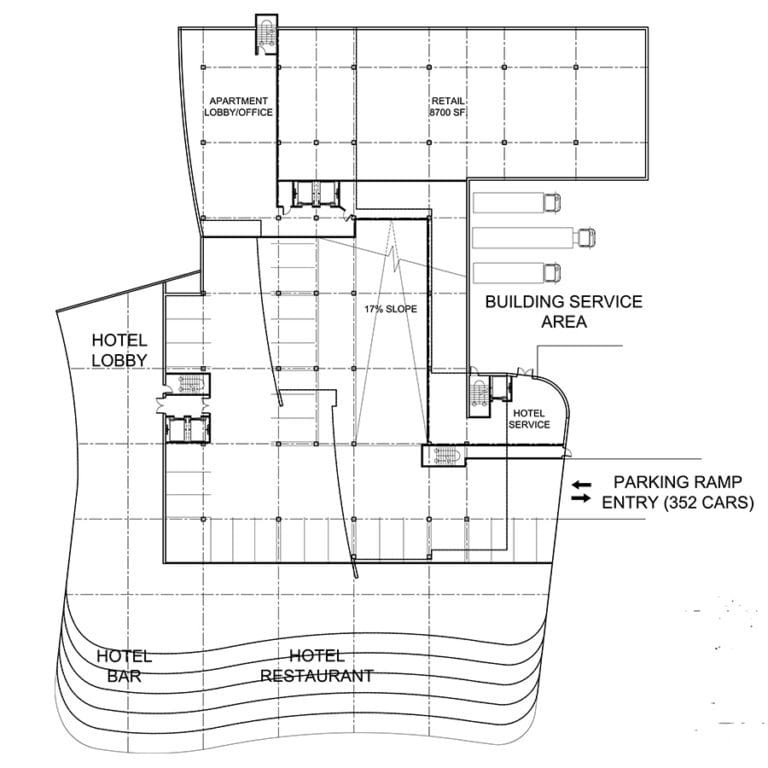Hospitality Design
Multifamily Design
Unbuilt Architecture
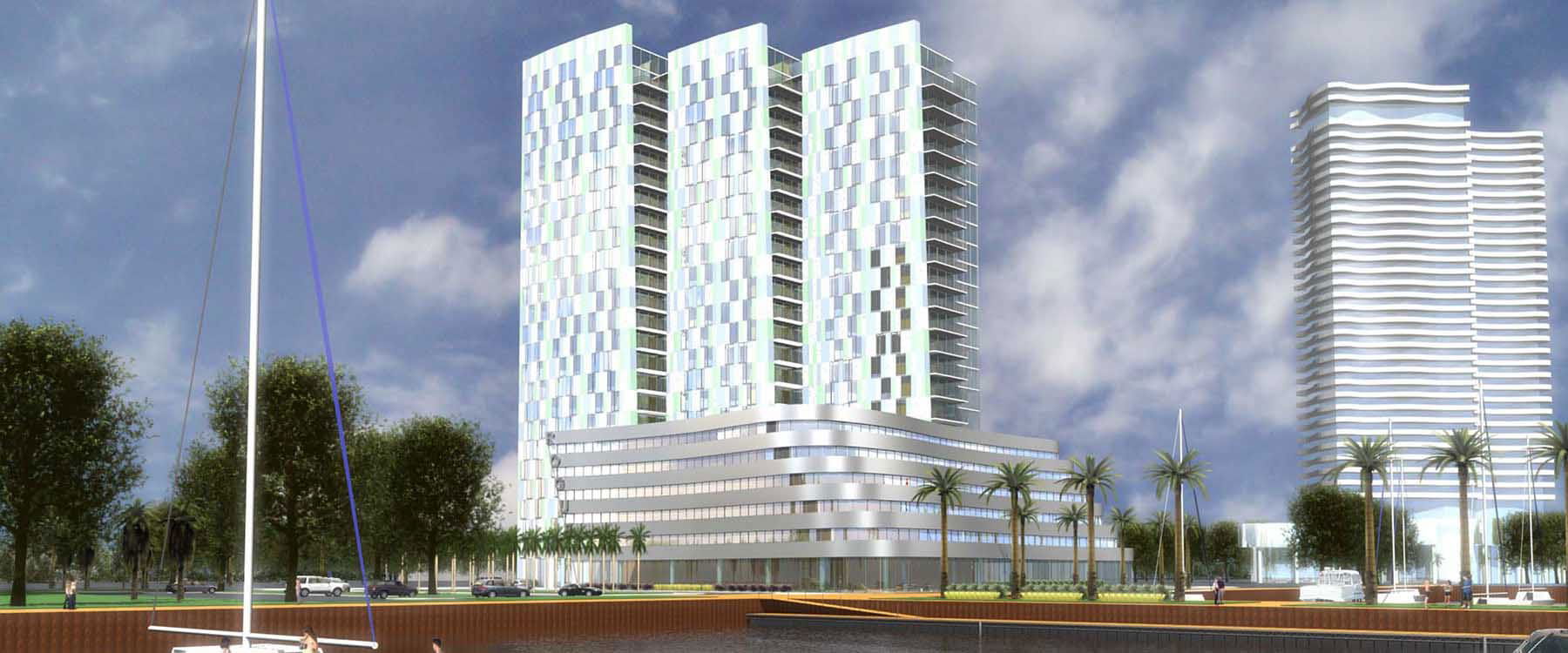

The Jacksonville Shipyards have a long and storied history, highlighted by their role in building “a ship a day” during World War II and repairing Navy ships during the Vietnam era. They also were a major source of family-supporting jobs in Jacksonville, at one time employing over 3,000 men and women. When the shipyards finally closed in 1992, the area was slowly transformed into other commercial uses and a park, but many parcels remained dilapidated and unused. Numerous projects were proposed but never completed, largely due to the environmental clean-up required to develop the land.
In 2011 PRA was asked to design a boutique hotel and luxury apartment complex on a vacant site at the southeast corner of E. Bay and Catherine Street, along the St. Johns River. The hotel would be called The Rogue, which could recall the legendary pirates and various toughs commonly associated with shipping, but in this case, it was a reference to an ocean phenomenon that can produce a 100-foot tall wave in otherwise calm seas. It was this fascinating concept that inspired the design of the building.
The Rogue Hotel would consist of a five-story parking ramp for 352 cars wrapped by a six-story hotel with 120 rooms. The ground floor of the complex would accommodate the hotel lobby, restaurant & bar, along with a strip of retail adjacent to E. Bay Street with associated delivery and back-of-house areas. The building would also accommodate the apartment building lobby for the 21-story, 260 apartments above.
The building design consists of a faceted tower atop a six-story base. The tower resembles the sails of a ship reflecting the shimmering water of the St. Johns River. The base, clad in stainless steel, surrounds the tower like a rogue wave, stepping back at each floor to create balconies for the hotel rooms facing the river, and washing over the guests at the hotel entrance.
The design of this building was another instance where the vision of the client and the characteristics of the site inspired the architect, proving yet again that creativity in architecture is a collaborative process.
The apartment floors were offset to minimize corridor len...
The apartment floors were offset to minimize corridor lengths and create the dramatic sail-like effect on the exterior
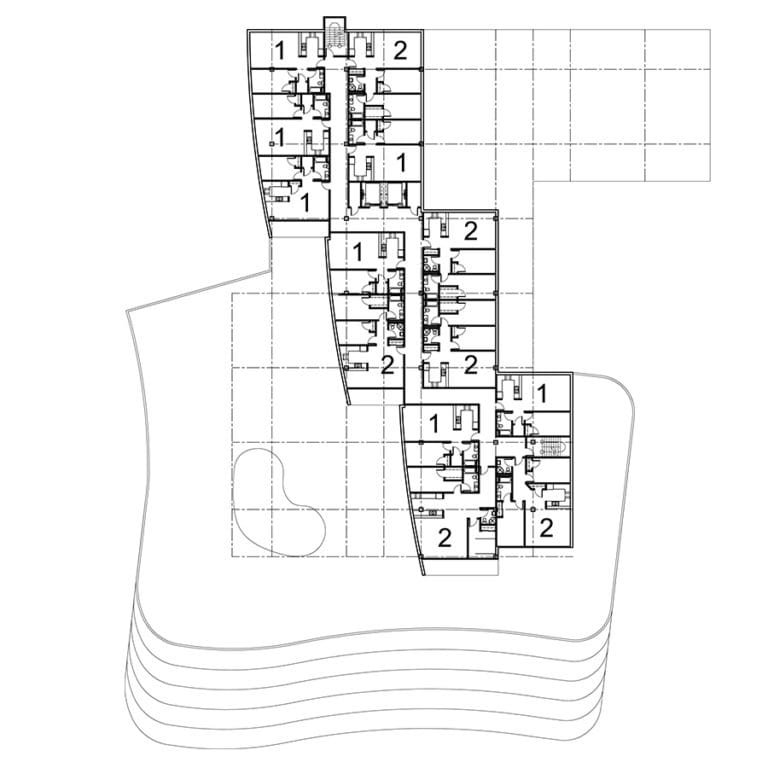
The parking ramp bridges over the retail on the north sid...
The parking ramp bridges over the retail on the north side of the building, while the hotel surrounds the south side. A dramatic six-story atrium is created between the parking ramp and the hotel, angling over the quests below like a 80 foot rogue wave
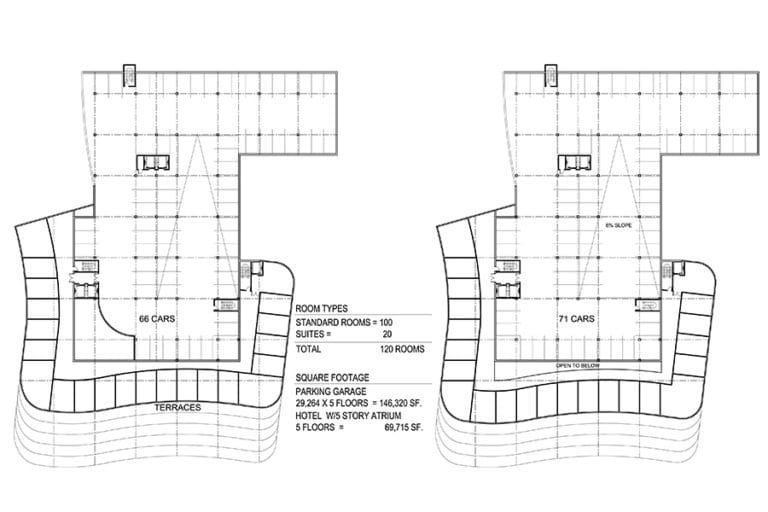
The complex was to join other planned developments along ...
The complex was to join other planned developments along the St. John’s River to provide housing and leisure opportunities that still have not come to fruition
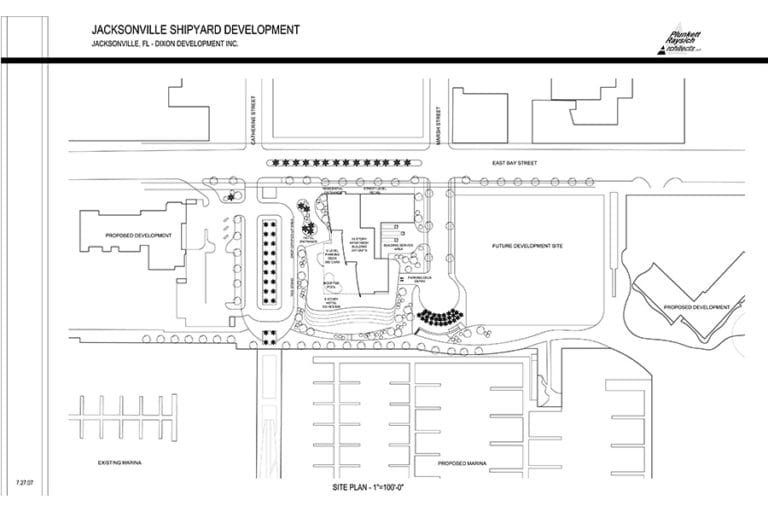
The first floor of the six-story parking ramp is surround...
The first floor of the six-story parking ramp is surrounded by hotel, apartment, retail, and support spaces
